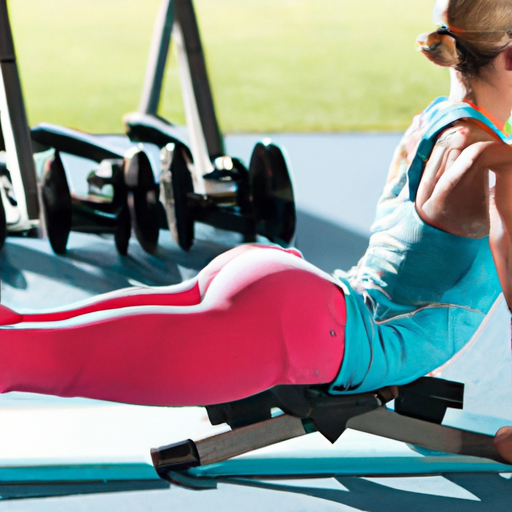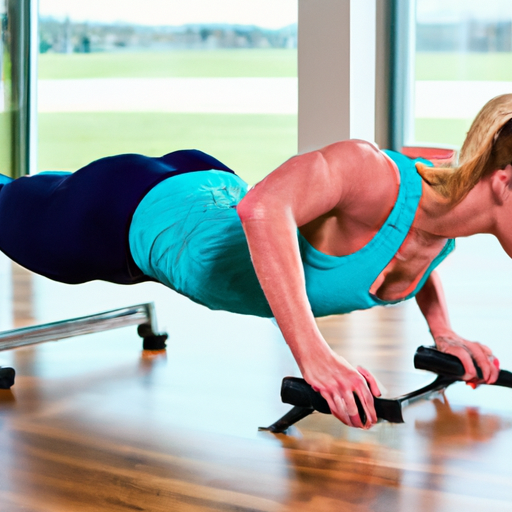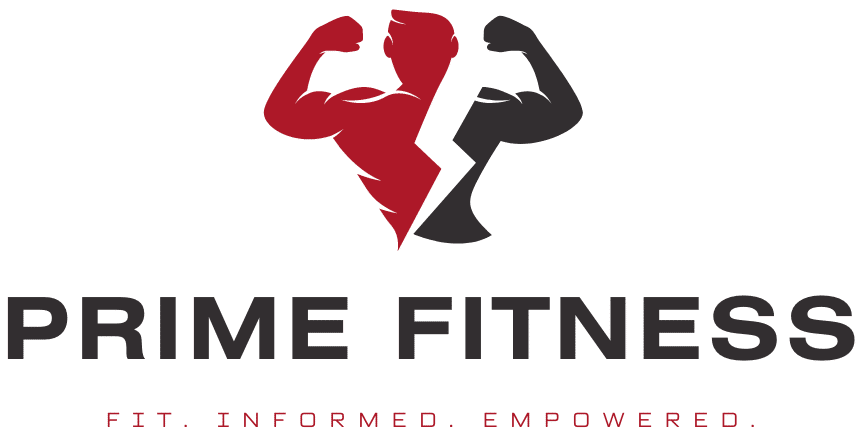Get ready to take your back gains to a whole new level with the modified Meadows Row exercise. This variation, developed by the late John Meadows, former IFBB bodybuilder and renowned coach, is perfect for targeting the hard-to-reach lower lats and building overall back strength. By utilizing a landmine setup with a thick barbell sleeve, the modified Meadows Row allows for more loading and less awkwardness, making it an excellent choice for athletes and anyone looking to develop crushing grip strength and forearm size. In addition, the support provided by having your non-working hand on a weight bench helps minimize lower back fatigue, resulting in a greater focus on the upper back and posterior delts. So, if you’re ready to take your back workouts to the next level, the modified Meadows Row is just the exercise you need.
The Modified Meadows Row
The Modified Meadows Row is an excellent variation of the traditional Meadows Row exercise. It offers unique features and benefits that target specific muscles in the back while minimizing fatigue in the lower back. In this article, we will explore the various aspects of the modified Meadows Row, including its unique features, benefits, how to perform it correctly, and programming suggestions.

Unique features of the modified Meadows Row
The modified Meadows Row offers several unique features that set it apart from other rowing exercises.
Angled bar path
One of the unique features of the modified Meadows Row is its angled bar path. As you row the landmine bar towards your chest, it unloads slightly, meaning that the exercise loads you most where you want it and least where you’re weakest. This angled bar path helps to challenge your muscles effectively and efficiently.
Variable resistance
The modified Meadows Row also provides variable resistance throughout the exercise. The strength curve of the rowing action is such that you’re weakest as you pull closest into your chest. This means that the exercise loads you the most where you need it and least where you’re weakest. This variable resistance ensures that you are effectively targeting the muscles in your back.
Easier on wrist, elbow, and shoulder joints
Unlike other rowing exercises, the modified Meadows Row is easier on the wrist, elbow, and shoulder joints. The angled bar path and variable resistance reduce stress and strain on these joints, making the exercise more comfortable to perform. This is particularly beneficial for individuals who may have pre-existing joint issues or those looking to minimize joint discomfort during their workouts.
Thicker bar sleeve for forearms and grip strength
The modified Meadows Row features a thicker bar sleeve, which provides additional benefits for forearms and grip strength. The thicker bar challenges your grip strength and forearm muscles as you hold onto it during the exercise. This helps to improve your overall grip strength and forearm development, making it an excellent exercise for those looking to strengthen their grip.
Benefits of the modified Meadows Row
The modified Meadows Row offers numerous benefits for individuals looking to strengthen their back muscles and improve their overall performance.
Targeting hard-to-reach lower lats
The modified Meadows Row is particularly effective in targeting the hard-to-reach lower lats. This area can be challenging to develop with traditional rowing exercises, but the modified Meadows Row provides a unique angle of resistance that effectively engages the lower lats. By incorporating this exercise into your training routine, you can specifically target and strengthen this muscle group.
Improved muscle development in the back
By targeting multiple muscle groups in the back, including the upper back, posterior delts, and lats, the modified Meadows Row promotes overall muscle development in the back region. This exercise helps to build strength and size in these muscles, resulting in a more developed and defined back.
Strengthening imbalances between sides
Unilateral rowing exercises, such as the modified Meadows Row, are excellent for strengthening imbalances between sides. If you have one side of your back that is weaker or less developed than the other, incorporating this exercise into your routine can help address these imbalances. By focusing on one side at a time, you can isolate and strengthen the weaker side, leading to improved overall symmetry and balance in your back muscles.
Enhanced performance in bilateral rows
In addition to addressing imbalances between sides, the modified Meadows Row can also enhance your performance in bilateral rows. By strengthening specific muscles in the back, this exercise can improve your overall strength and stability when performing bilateral rowing exercises. This can lead to improved performance and better results in your training.
Muscles targeted by the modified Meadows Row
The modified Meadows Row targets multiple muscle groups in the back, as well as the forearms. By performing this exercise correctly, you can effectively engage and strengthen these muscles. The muscles targeted by the modified Meadows Row include:
Upper back
The modified Meadows Row engages the muscles in the upper back, including the rhomboids, trapezius, and rear deltoids. These muscles play a crucial role in maintaining good posture, shoulder stability, and overall upper body strength.
Posterior delts
The posterior delts, located in the back of the shoulders, are also targeted during the modified Meadows Row. Strengthening these muscles can help improve shoulder stability and overall shoulder strength.
Lats
The latissimus dorsi, commonly referred to as the lats, are one of the largest muscles in the back and are responsible for movements such as pulling and rowing. The modified Meadows Row effectively engages and strengthens the lats, helping to build a stronger and more defined back.
Forearms
The modified Meadows Row also targets the forearm muscles, particularly the muscles responsible for grip strength. The thicker bar sleeve challenges the forearms and grip strength, helping to improve overall forearm development and grip strength.
Setting up the modified Meadows Row
Before performing the modified Meadows Row, there are a few considerations and setup steps to keep in mind.
Considerations before starting
It’s important to note that the modified Meadows Row requires more time to set up and more equipment compared to other rowing exercises. Ensure that you have enough space and the necessary equipment before starting. Additionally, be cautious of your form and technique throughout the exercise to prevent injury.
Positioning of weight bench and barbell
To set up the modified Meadows Row, position the weight bench perpendicular to the landmine bar setup. Place the bench close to the end of the barbell, ensuring that it doesn’t hit the barbell during the upward motion of the exercise.

Step-by-step guide to performing the modified Meadows Row
To perform the modified Meadows Row correctly, follow these step-by-step instructions:
- Step over and straddle the weight bench, placing one leg on either side.
- Put your non-working hand onto the middle of the bench with your arm supporting you.
- Hinge back and grab the end of the barbell with an overhand grip and maintain a neutral spine.
- Contract your back muscles to initiate the rowing action, driving your elbow up towards the sky.
- Squeeze your back muscles hard at the lockout position, fully engaging the targeted muscles.
- Control the eccentric phase by lowering the barbell back down in a slow and controlled manner.
- Repeat the movement for the desired number of reps.
It’s important to maintain proper form and technique throughout the exercise. Focus on engaging the targeted muscles and avoid using momentum or relying on other muscles to perform the movement.
Recommended sets and reps
To incorporate the modified Meadows Row into your training routine, consider the following recommendations for sets and reps:
- Perform three to four sets of the modified Meadows Row.
- Aim for six to ten reps per side, depending on your goals and current training phase.
These recommendations can be adjusted based on your individual fitness level, goals, and preferences. It’s always a good idea to consult with a qualified fitness professional for personalized recommendations and guidance.
In conclusion, the modified Meadows Row is a highly effective exercise for targeting and strengthening the muscles in the back. Its unique features, including the angled bar path and variable resistance, provide several benefits for individuals looking to improve their muscle development and overall performance. By incorporating this exercise into your training routine and following the proper technique, you can work towards achieving a stronger, more defined back.





